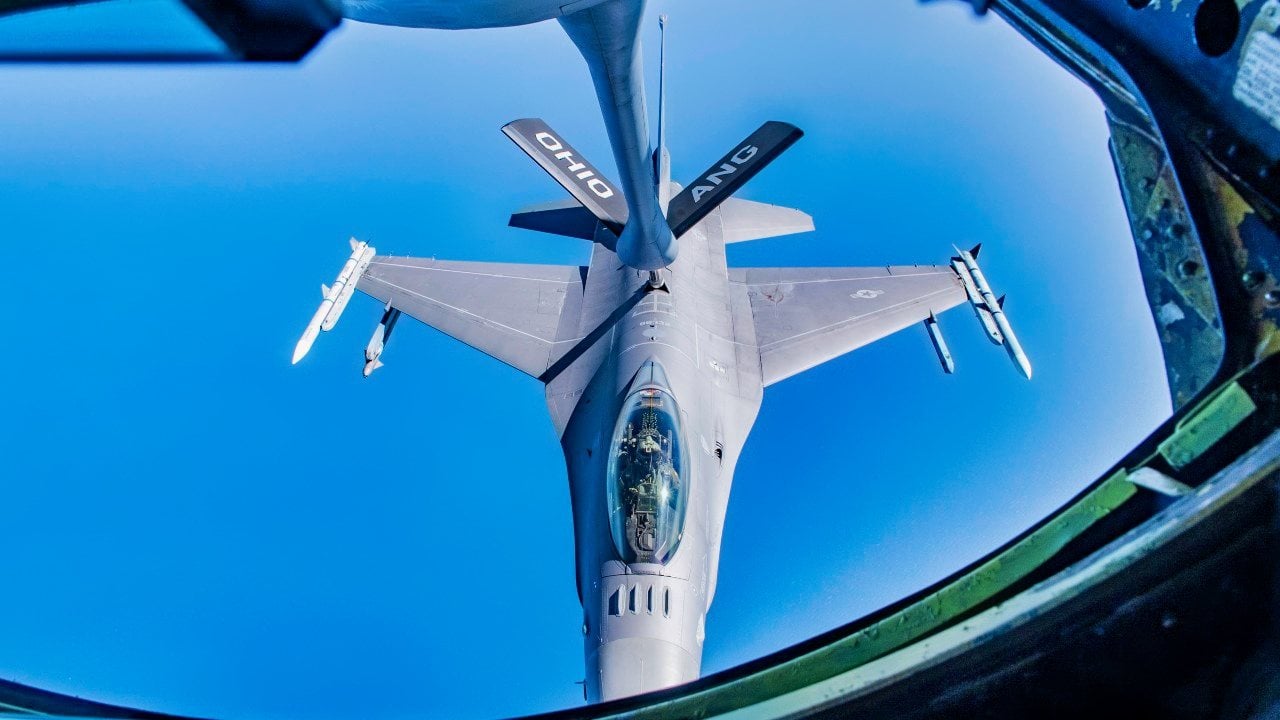Sorry, U.S. Air Force: The F-16 Fighting Falcon Era Is Coming to a Rapid End
The recent donation of American-made F-16 Fighting Falcons to Ukraine marks a significant upgrade from the Soviet-era jets Ukraine has been using. However, the F-16, a product of the Cold War, lacks the stealth capabilities crucial for modern air warfare.
Summary and Key Points: The recent donation of American-made F-16 Fighting Falcons to Ukraine marks a significant upgrade from the Soviet-era jets Ukraine has been using. However, the F-16, a product of the Cold War, lacks the stealth capabilities crucial for modern air warfare.

-While useful for defending Ukrainian airspace and engaging in Suppression of Enemy Air Defense (SEAD) missions, the F-16's effectiveness diminishes in contested enemy airspace.
-As air defense technologies advance, stealth becomes essential, limiting the F-16's role in future conflicts. Nevertheless, these jets provide Ukraine with a temporary edge, enhancing its defensive capabilities against Russian aggression.
The F-16 Era Is Almost Over...Regardless of the Ukraine War
The F-16 Fighting Falcon has been grabbing headlines lately, as the fourth-generation jet was recently donated to Ukraine in a transaction that Vladimir Zelensky spent years calling for. The American-made F-16 will surely represent an upgrade over the Cold War-era Soviet fighters that Ukraine is currently dependent upon.
But the F-16 is also a Cold War-era jet – a fact the hype and headlines surrounding the F-16 transaction may be obscuring.
While still useful on the modern battlefield, the F-16 has limited applications, in large part because the airframe lacks stealth characteristics.
The growing importance of stealth and the F-16
As air defense and detection technology continues to improve, stealth has becoming increasingly important, indeed vital. Today, given the perceptiveness of detection equipment, and the lethality of anti-air defenses, an airframe without stealth would simply not be capable of surviving in enemy-controlled airspace.
Of course, converting enemy-controlled airspace to contested airspace, or self-controlled airspace, is quite difficult without entering the air space. So, an airframe without stealth characteristics has limited application in modern battle. Take the Russo-Ukraine War for example.
The non-stealth F-16 will be helpful in defending the skies over Ukraine, against an onslaught of Russian fighters. But say for example the Ukrainians repelled the Russians from Ukrainian territory and wanted to proceed, pushing into Russia for the sake of gaining new territory for Zelensky’s regime.
As soon as the Ukrainians encountered Russian-controlled air space, the F-16’s value would diminish markedly, as would its likelihood of survival. A stealth aircraft, on the other hand, like the F-35 or the forthcoming B-21, would retain its value in the contested airspace over Russia, offering the option for deep-penetration strike missions.
The F-16 is not fully obsolete, however, and can still provide value in offensive situations. The F-16 is celebrated for its SEAD (Suppression of Enemy Air Defense) abilities, and would likely be called upon to help destroy or disrupt enemy air defense systems. Of course, if the enemy’s radar facilities were still intact, the F-16 would struggle to survive in a SEAD role. But in any situation where air superiority has been attained, the F-16 would again offer value in an air patrol or bombing role.

The F-16 has proven itself in lopsided engagements – over the skies of Iraq and Afghanistan, where defense systems were either nonexistent or incapable of threatening American assets. But the days of the F-16 being a preeminent fighter have ended. The fourth-generation jet is merely a supplement to more advanced airframes like the F-22 and F-35, a cheaper alternative to America’s most valuable systems. In a conflict with a great power, China for example, the F-16 would remain on the backbench.
Today, in Ukraine, the F-16 should be equipped with the tools to accomplish what the Ukrainians need to accomplish – mitigating any Russian advantage in the skies over Ukraine, complicating the invasion, holding out a little longer. The F-16 will not offer a magic bullet for Zelensky, but the American jet could buy a little more time.
About the Author: Harrison Kass, Defense Expert
Harrison Kass is a defense and national security writer with over 1,000 total pieces on issues involving global affairs. An attorney, pilot, guitarist, and minor pro hockey player, Harrison joined the US Air Force as a Pilot Trainee but was medically discharged. Harrison holds a BA from Lake Forest College, a JD from the University of Oregon, and an MA from New York University. Harrison listens to Dokken.
All images are from Shutterstock.


